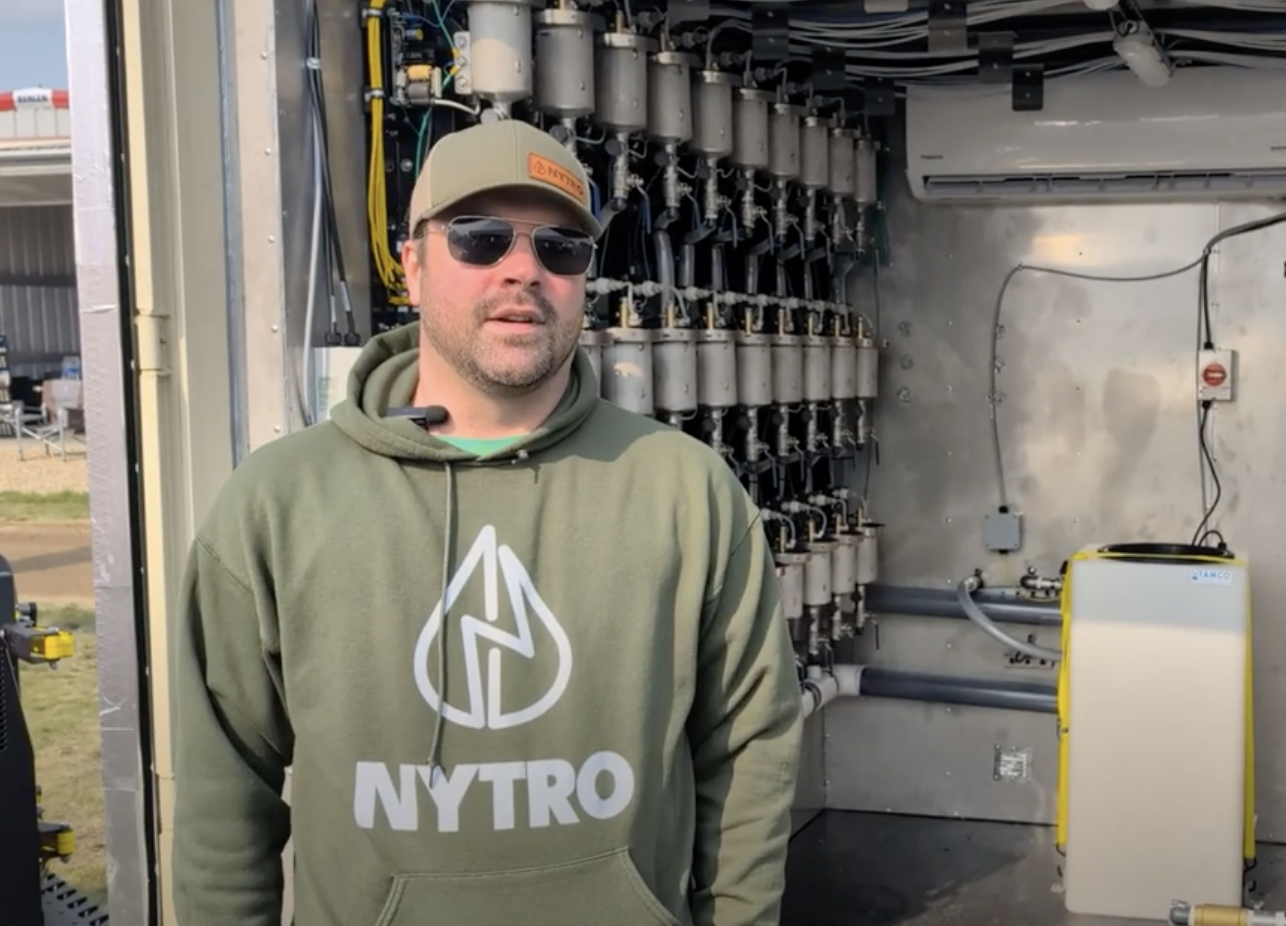Two instructors from Assiniboine Community College recently returned from a whirlwind five-week wind power training program in Germany, one of the world’s leaders in renewable energy.
“We spent well over a week travelling all around the country with service technicians from various areas working on windmills,” said Dietrich Schellenberg, a farm equipment instructor at ACC.
Schellenberg and electrical instructor Garry Jones, along with their counterparts from five other colleges, also toured the production facilities of Siemens, Vestas and REpower, as well as a blade manufacturer in Denmark.
Read Also

VIDEO: Green Lightning and Nytro Ag win sustainability innovation award
Nytro Ag Corp and Green Lightning recieved an innovation award at Ag in Motion 2025 for the Green Lightning Nitrogen Machine, which converts atmospheric nitrogen into a plant-usable form.
The program was offered by BZEE, or Bildungszentrum für Erneuerbare Energien, a training institution for windmill technicians in Germany. By enrolling their instructors, Canadian colleges can offer courses that are certified on par with European Union standards and thus receive international recognition.
The instructors spent much of their time in Husum, Germany, an hour north of Hamburg. The town of 20,000 is home to the headquarters of all the major companies in the industry and has been the wind power capital of the world for the past two decades.
“Anything that happens with windmills originated there,” said Schellenberg. “They have good wind and I guess that’s why everything started there.”
The highlight for Schellenberg was two days he spent with a Siemens crew erecting a new tower near the Danish border.
“Basically, when I went, I didn’t know anything about windmills. In Canada, the industry is so new that we don’t have a pool of qualified windmill people,” he said.
“But essentially, when you break down a windmill, it’s just mechanical and electrical parts that are really no different from anything that we’re familiar with. It’s just a different application.”
A wind power technician must understand the mechanical side of windmills, such as hydraulics, gearboxes and brakes, as well as electrical technologies.
Working 80 to 90 metres in the air, however, requires a greater emphasis on safety. With this in mind, the instructors spent a lot of time learning new skills, such as how to check their equipment and rappelling off of BZEE’s 60 metre training tower.
“We pretended that somebody had a problem inside the tower and we had to go up there and rescue them,” he said.
“Obviously, safety is huge.”
With about 20 percent of Germany’s electricity now generated by wind, the country’s industry hit its peak in 2002, he said. Now, all of the major companies are looking to take their expertise abroad to emerging markets such as Canada.
“It has kind of plateaued in Germany. Most of the good wind spots have turbines in them,” Schellenberg said.
“They see us and the U.S. as the next frontier.”
Germany’s most recent efforts have been focused on replacing groups of smaller 250 kilowatt turbines with fewer but larger, two to three megawatt units. Canada’s fledgling industry stands to benefit from the advanced technology that has been 20 years in development.
“They said that in northern Germany, they could run that part of the country just on wind power if they wanted to,” he said.
“Right now they are in the second phase.”
Schellenberg said modern turbines are more reliable than automobiles but require regular maintenance such as oiling gearboxes and greasing moving parts because they are required to run 24 hours a day.
A technician’s job would typically include checking the torque on the numerous bolts that hold the huge towers together and replacing electronic sensors that govern the pitch and speed of the blades.
At Siemens’ headquarters, one person at a computer terminal is capable of simultaneously monitoring every windmill that the company operates in the world.
“If an error code pops up on her screen, she can see what the problem is,” he said.
“If it’s nothing serious, she can restart it from there, or contact a service rep.”
The Assiniboine college wind technician course is expected to start in the fall of 2008. Graduates of the proposed 10-month program can expect to earn wages that are competitive with other physically and technically demanding energy sector jobs, such as the oil fields, Schellenberg said.














